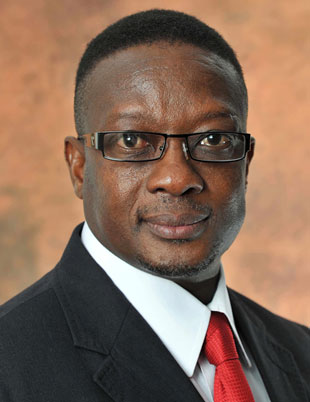VANCOUVER — It has been a tumultuous year for the mining industry in South Africa, as volatile platinum markets and socio-political turmoil raise questions about how the nation’s government can develop its rich mineral reserves without compromising the health and prosperity of its people.
In mid-March South Africa’s Deputy Minister for Mineral Resources Godfrey Oliphant visited Vancouver for an event sponsored by African-focused Canadian companies Ivanplats IVP-T) and Platinum Group Metals (PTM-T, PLG-N) to discuss the mining industry’s future in his country.
With South Africa’s ruling African National Congress party set to review the country’s mineral legislation through 2014, Oliphant took the opportunity to express his view on how the natural resource industry and government can improve social licensing with the African people and assure long-term and sustainable resource development.
“There are three issues where I see room for improvement in regards to the existing legislation,” Oliphant told The Northern Miner in an interview after his presentation. “Firstly, there has been a realization of how important consultation is in mining law, but I think we left the actual framework of that consultation a bit undefined in previous legislation, and that’s led to some legal challenges.”
He says that “the next issue has to do with associated minerals, where people would apply for one commodity and find something else. As it stands they would have to start the entire application process all over again. The third item to address is value addition, because we again left it as a discretionary matter,” he adds.
Value addition was part of Oliphant’s focus, with a nod towards upgrading processing infrastructure for resources like iron ore and coal to realize more wealth within South Africa. Oliphant outlined a way forward through supply-chain localization, which could lead to affordable energy and lower import costs on secondary goods like cement.
South Africa is in the midst of a US$97-billion infrastructure program, announced in 2009, which will see upgrades to railways, ports and power. President Jacob Zuma struck down nationalization in late 2012, so the regime has been adjusting taxation and royalty streams in a bid to raise capital and end unemployment and income equality issues in South Africa.
“In South Africa, we recognize that our mining sector remains critical for our political economic objectives of job creation, poverty alleviation and economic growth,” Oliphant continues. “We are committed to unlocking this capacity. But we are just as committed to our young constitutional democracy. Achieving our twin objectives of deepening our democracy whilst advancing our socio-economic development is our topmost priority.”
It’s hard to discuss South Africa without mentioning the turmoil stemming from heavy income inequality and difficulties with trade unions and labour relations. The South African Institute of Race Relations released a report in early April that outlined US$1.5 billion in lost revenue in the nation’s mining industry during 2012 due to labour unrest. That led to a US$1.3-billion drop in export revenues and a 0.5% drop in the country’s gross domestic product growth to 2.5%.
By far the most brutal occurrence in labour strike was the police massacre at Lonmin’s (LMI-L) Marikana platinum mine in August 2012, which resulted in 34 deaths.
“For the past ten years we’ve been working hard to stabilize, and we’ve been making progress. We have had unfortunate situations of violent killings, and the police stepped in and we saw a situation that we never want repeated in the country” he says about the strike at Marikana, where a breakaway union clashed with the National Union of Mineworkers.
“We’re addressing that situation and have been able to bring all the parties together to sign a peace accord, and understand the outstanding problems. So I don’t envision a repeat of that. Those are the two major issues — we have a stable labour relations system in the country and that situation happened outside of that, and we do need to close some loopholes with the unions,” he adds.
Of interest to Canadian explorers, Oliphant touched on South Africa’s need to reach out to the international exploration community and attract more junior companies to the jurisdiction. He says that South Africa has a solid public geoscience database and stable laws in regards to taxation, staking and mineral rights.
“We need to strengthen the partnership with the junior miners,” he says. “I think the framework exists for exploration-stage companies, so we just have to develop a comprehensive strategy to bring that investment back, and I don’t think we’ve done enough on that front yet.”


Be the first to comment on "South Africa searches for balance in mineral development"